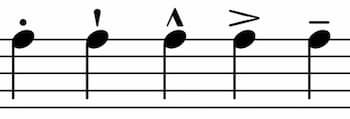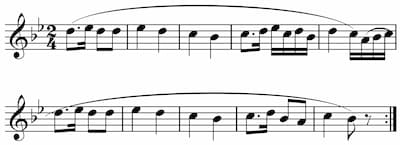
Adrian Ong
The Cultural Center of the Philippines, with the Philippine Philharmonic Orchestra, presents the PPO Young People’s Concert, featuring the CCP young music scholars namely flutist Mark Kenedy Rocas, violinist Adrian Nicolas Ong, and pianist Aidan Baracol, on July 7, 4 pm, at the Samsung Performing Arts Theater.
This will be the first time that the PPO will be performing at the Samsung Performing Arts Theater. With the CCP Main Building undergoing rehabilitation, the leading arts institution partners with various performing arts venues around to continue to provide world-class shows and programs to both Filipino and international audiences.
Performing under the baton of Maestro Herminigildo Ranera, the country’s leading orchestra with the young musicians will be performing Jacques Offenbach’s Orpheus in the Underworld Overture, Wolfgang Amadeus Mozart’s Flute Concerto No. 2 (First and Second Movement), Maurice Ravel’s Tzigane, and Sergei Rachmaninoff’s Piano Concerto No. 2.
Born and raised in Cavite, Rocas started playing the flute at nine years old. He later joined the General Trias Band 89, under the baton of Frenvee Andra, and became a member of the Philippine Youth Symphonic Band from 2005 to 2012.
Rocas studied at the Philippine High School for the Arts and performed his first recital at the Tanghalang Aurelio Tolentino (CCP Little Theater) in 2011. He has a music degree from the UP College of Music and trained under Prof. Enrique Barcelo, Prof. Antonio Maigue, and Francisco Candelaria. He has taken several masterclasses under renowned international artists such as Daniel Agi of the Handwerk Ensemble (Germany), Christoph Bosh of the Phoenix Ensemble (Basel), Michael Sitsky, Raphael Leone of the Vienna Symphony Orchestra, and Ulrich Muller Doppler.
His accolades include first prize winner at the National Music Competition for Young Artists (NAMCYA) Woodwind Category C; a delegate to the 2019 ASEAN Music Festival in Haiphong, Vietnam, and at the 48th anniversary of the Philippines-UAE Diplomatic Relations in Louvre Abu Dhabi, 2022.

Aidan Baracol
Rocas is currently the assistant principal flute of the UP Symphony Orchestra, under the baton of Maestro Chino Toledo.
Meanwhile, Adrian Nicolas Ong received a scholarship from the Interlochen Arts Academy in Michigan, where he served as a concertmaster and later graduated with honors. He trained under mentors Mellissa Geronimo Esguerra, Gina Medina-Perez, Paul Sonner, Lewis Kaplan, and Yibin Li. Ong recently graduated with honors from Mannes School of Music in New York City and studied with renowned violinist Stefan Jackiw.
Ong made his professional debut at 17 with PPO under former music director and principal conductor Yoshikazu Fukumura and performed with the PPO at the 2018 Asia Region Suzuki Conference. He participated in the Curtis Summerfest Young Artist Program, where he held principal and concertmaster positions.
He was the first recipient of the NYC Recital Debut Award from the FilAm Music Foundation and performed his Carnegie Hall debut in May 2023, where he performed a solo recital at Weill Recital Hall with Victor Asuncion.
While studying abroad, Ong remains connected to the Philippines. Being part of the FilAM Music Foundation’s roster of young artists and a scholar of the Friends for Cultural Concerns of the Philippines (FCCP), he has spearheaded fundraising concerts for both groups at home and abroad.
He is slated to do touring concerts with the Asian Youth Orchestra in various parts of Asia and Europe in July 2023. Ong continues to give back by being a mentor to the Philippine Suzuki Youth Orchestra and many other young musicians.

Mark Kenedy Rocas
Aidan Ezra Baracol started playing the piano at 10, initially expressing his musicality and fascination with rhythm through drums. He began his formal piano lessons under Prof. Godofredo Areza and did his first solo piano recital at the SEARCA Auditorium, University of the Philippines in 2017. He later trained under masters such as Prof. Josue Greg Zuniega and Prof. Anthony Say.
He also studied under Roberta Rust, Wael Farouk, Joanna MacGregor, Jovianney Emmanuel Cruz, Nelson de la Vign Fabri, Adam Kent, Chi Ying Hung, Anait Karpova, Joy Song, Chiarra Cipelli, Alexander Tchobanov, Elodie Vignon, Oliver Salonga, Stephen Joven Lee, Carmencita Sipin Aspiras, Inna Montesclaros, and Ross Salvosa.
In the last three years, Baracol has won in various local and international piano competitions, including first prize Junior Piano category, Best Interpretation of the Contest Piece at the NAMCYA 2020; first prize, 6th Steinway Youth Piano Competition (Advanced Class Category C) in 2022; first prize, 2022 Sonora Piano Competition Category B2; first prize, 2021 Beethoven & Beyond Piano Competition Category B1, Piano Teacher’s Guild of the Philippines Foundation, Inc. Manila; second prize, 2021 Kayserburg International Youth Piano Competition (Philippine Leg); second prize in the 5th Steinway Youth Piano Competition (Advanced Class Category) in 2020; and second prize in the 2019 Kayserburg International Youth Piano Competition (Philippine Leg, Junior Category).
He also earned distinctions in international online piano competitions such as the 2022 Singapore International Piano Competition, 2021 Great Masters International Piano Competition Vladimir Horowitz Edition, 2022 International Music Association Gloria Artis in Vienna Competition, 2nd International Piano Competition in 2020; 2021 International Clara Schumann Competition; 2021 World Classical Music Awards Online Competition; 1st International Piano Competition in 2021; and 2021 Sugree Charoensook International Music Competition of Thailand.
Baracol was one of the featured artists at the PPO 50th Anniversary Gala Concert held recently at the Manila Metropolitan Theater, performing alongside world-renowned pianist Raul Sunico and tenor Arthur Espiritu.
Catch the three young virtuoso musicians at the PPO Young People’s Concert this July 7. For more details, visit the CCP website (www.culturalcenter.gov.ph) or follow the official CCP social media accounts on Facebook, Twitter, Instagram, and Tiktok










